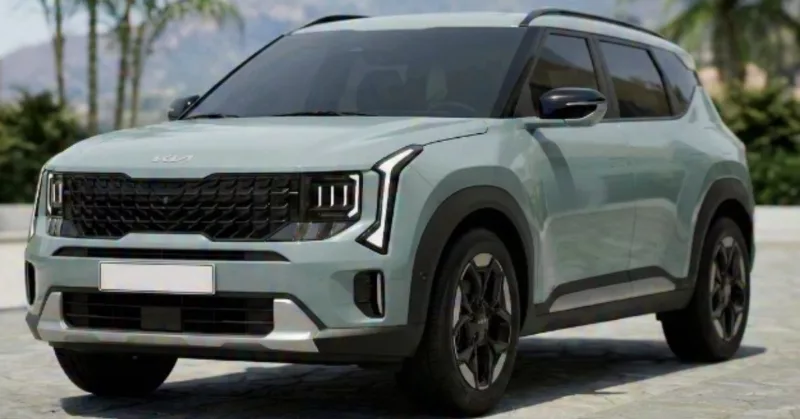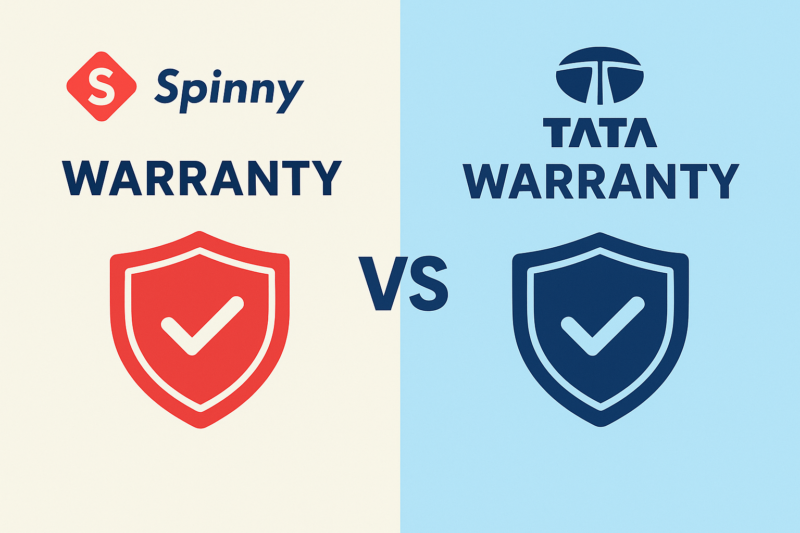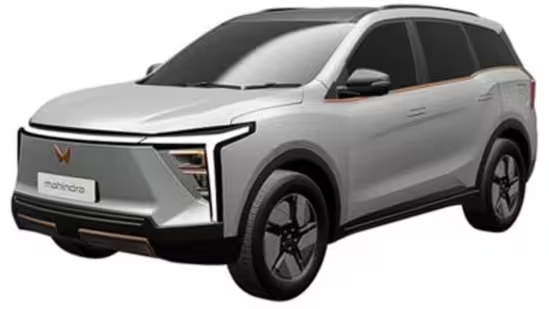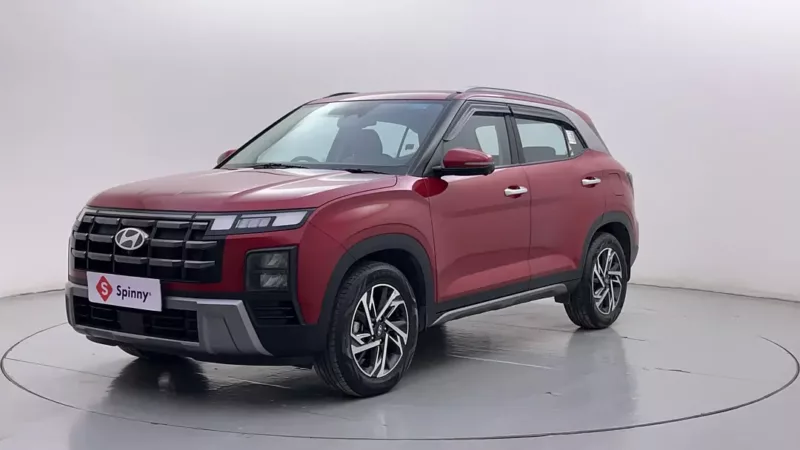In case you have not noticed already, the mid-size sedan segment has seen a bit of a renaissance of late, thanks to the efforts of Honda, Hyundai, and Volkswagen Group. The phase began with the arrival of Skoda Slavia, while the paradigm shift took place when the Volkswagen Virtus hit the market. Being the successor of the illustrious Vento, the Virtus had big shoes to fill and it is fair to say, the German mid-size sedan did not disappoint. While the exciting powertrains, premium passenger experience, and robust body shell make Virtus a magnetic proposition, the gorgeous looks add a cherry on top.
Whether it is the Virtus or any other sedan, if a carmaker competes in the mid-size sedan segment, the biggest challenger before them is the iconic Honda City. The Japanese sedan has been ruling the roost for more than 24 years and its dominance is not looking to fade off even in the far future. For its reliability and perennial durability, the Honda City is one of the few cars with the best resale value. Since the rising popularity of the Volkswagen Virtus became a matter of concern for Honda, a facelift was launched for the Honda City to offer a slightly refreshed product. A comparison between Honda City and Volkswagen Virtus is quite natural for those planning to buy a capable mid-size sedan. If you are one of them, this comparison of the Honda City vs the Volkswagen Virtus will educate you about the key differences and help you decide between the two.
Also Read – Hector vs Harrier
Honda City vs Volkswagen Virtus: Dimensions

Honda City | Volkswagen Virtus | |
Length | 4,574 mm (SV, V, VX) & 4,583 mm (ZX) | 4561 mm |
Width | 1,748 mm | 1,752 mm |
Height | 1,489 mm | 1,507 mm |
Wheelbase | 2,600 mm | 2,651 mm |
Boot Space | 506 litres | 521 litres |
As can be seen, the Volkswagen Virtus is significantly bigger than the Honda City despite being marginally shorter. Being wider, taller, and with a longer wheelbase, the Virtus offers more room in its cabin for 5 passengers, something most buyers look forward to. Even the 521 litres of boot space on the Virtus comes across as a better luggage carrier than the 506 litres offered in Honda City. All the same, it is worth mentioning that Honda City has never had any complaints as far as space is concerned.

In light of looks, sedans have always been considered classy vehicles and there is a regal feel that people generally associate with them. Both Honda City and Volkswagen Virtus are good-looking cars but differ in their overall appeals. On the Honda City, things are kept on the sophisticated side making the Japanese sedan look elegant with clean panels, finesse across the body, and a calm face.
On the other hand, the design of the Volkswagen Virtus is inspired by VW’s global flagships, the Jetta and the Passat, making the Vento successor nothing short of a feast for the eyes. Captivating from every angle, the Volkswagen Virtus has been aerodynamically designed, which largely indicates the sporty performance it has been built for.
Also Read – Skoda Kushaq vs Taigun
Honda City vs Volkswagen Virtus: Engine & Transmission
Honda City | Volkswagen Virtus | |
Engine | 1.5 litre petrol engine | 1.0 litre turbo petrol engine 1.5 litre turbo petrol engine |
Power | 121 PS | 115 PS 150 PS |
Torque | 145 Nm | 178 Nm 250 Nm |
Transmission | 6-speed manual gearbox & 7-step CVT automatic | 6-speed manual gearbox as standard 6-speed torque converter automatic for 1.0L petrol 7-speed DSG automatic for 1.5L petrol |
Mileage | 17.8 – 18.4 km/l | 18.12 – 19.40 km/l (1 litre engine) 18.67 km/l (1.5 litre engine) |
Just like the looks, the mechanicals of both sedans are very defining of their purposes. Though the 1-litre turbo petrol engine is slightly less powerful than the 1.5 litre petrol unit of the Honda City, it produces significantly more torque that translates to better acceleration. Also, both engines of the Volkswagen Virtus are slightly more fuel efficient than that of the Honda City. However, the legendary i-VTEC engine of Honda City has made a mark in India and is still unparalleled in terms of all-around performance. Honda also offers the City with a hybrid powertrain which has a significantly better mileage but competes in a different league altogether.
Coming to the bigger engine of Virtus, the 1.5-litre turbo petrol packs a lot of thrill for driving enthusiasts and the DSG automatic does a sterling job of keeping the shifts slick. This engine also comes with a cylinder-on-demand technology that shuts off two of its cylinders when the sedan is just cruising, resultantly increasing fuel efficiency. Like the DSG automatic, the system works so unobtrusively that you cannot realise it unless you look at the instrument cluster.
Honda City vs Volkswagen Virtus: Features & Comfort

Honda City | Volkswagen Virtus | |
Infotainment system | 10.1-inch touchscreen infotainment system | 10.1-inch touchscreen infotainment system |
Music system | 8-speaker sound system | 8-speaker sound system |
Climate control | Automatic | Automatic |
Ventilated seats | Not available | Front ventilated seats |
Adjustable steering | Tilt & telescopic adjust | Tilt and telescopic adjust |
Drive modes | Not available | Not available |
Instrument cluster | Semi-digital instrument cluster | 8-inch digital instrument cluster |
Sunroof | Single-pane sunroof | Single-pane sunroof |
Adjustable seats (manual or electric) | Height adjustable driver seat (manual) | Height adjustable driver seat (manual) |
Rear AC vents | Available | Available |
60:40 rear seat split | Not available | Available |
Cruise control | Adaptive cruise control in V, VX, and ZX | Standard across variants |
Inside the cabins, both sedans offer the premium feel expected of mid-size sedans. The 1-litre turbo variants of Virtus and all variants of Honda City have a black and beige colour scheme, while the top variant of Virtus gets an all-black interior with red stitching for a sporty feel. With the gloss black treatment on the dashboard that neatly houses the touchscreen, the front section of the Virtus feels a bit more modern than that of the City. Meanwhile, the cushioning of Honda City’s seats is softer and therefore comforts passengers a little better than Volkswagen Virtus.

Feature-wise, both cars are amply laden and check all the requirements for a premium passenger experience, such as auto climate control, premium sound system, sunroof, and others. However, the Volkswagen Virtus does have some advantages in the form of ventilated seats to enrich the ride of front passengers, a fully digital instrument cluster for driver’s convenience, and a 60:40 rear seat split. Moreover, the Virtus offers cruise control in all its variants, whereas the City offers adaptive cruise control which is altogether a different function, in all variants except the base one.
Also Read – Maruti XL6 vs Ertiga
Honda City vs Volkswagen Virtus: Safety Features
Honda City | Volkswagen Virtus | |
G-NCAP Safety Rating | 5-star in ASEAN NCAP | 5-star in GNCAP |
Airbags | Up to six | Up to six |
ABS with EBD | Yes | Yes |
ESC | Yes | Yes |
Traction Control | Yes | Yes |
Automatic headlamps | Yes | Yes |
Rain-sensing Wipers | Yes | Yes |
Hill hold assist | No | Yes |
Hill descent control | No | No |
Rear sensors | Yes | Yes |
Rear parking camera | Yes | Yes |
ISOFIX Child seat anchor points | Yes | Yes |
ADAS | Yes | No |
The safety standards of the Indian automobile industry have reached an all-time high. While Honda is catching up with rising safety bars, the build quality of Volkswagen cars has always been respected all around the world.
Honda has given all the safety essentials to the City, but it is the ADAS safety suite that makes this sedan an exceptionally safe Honda car. The Honda City’s ADAS safety suite consists of adaptive cruise control, auto high beam assist, lane departure warning, automatic emergency braking, and others.
All said and done, the safety of a car predominantly starts with the bodyshell; this is where the Volkswagen Virtus has emerged as the safest car in India. Scoring a full 5-stars G-NCAP rating with the best scores, the Volkswagen Virtus has beaten its siblings Taigun and Kushaq.
On safety grounds, there is tight competition between both sedans. While a formidable bodyshell, rated 5-stars by G-NCAP or ASEAN NCAP strongly shields you in case of accidents, the ADAS safety suite mitigates the possibility of accidents and reduces their severity.
Also Read – Innova Hycross vs Innova Crysta
Honda City vs Volkswagen Virtus: Price comparison
Honda City | Volkswagen Virtus | |
Base variants (Ex-Showroom) | Rs 11.49 lakh | Rs 11.48 lakh |
Mid variants (Ex-Showroom) | Rs 12.37 – 13.62 lakh | Rs 13.38 – 14.68 lakh |
Upper mid variants (Ex-Showroom) | Rs 13.49 – 14.74 lakh | Rs. 14.90 - 16.20 lakh |
Top variant | Rs 14.72 – 15.97 lakh | Rs. 18.57 lakh |
The prices of both sedans do not differ too much, except for the top GT Plus variant of Volkswagen Virtus, as that is where things become steep. Although, the Volkswagen Virtus GT Plus is almost similar priced as the base variant of the Honda City Hybrid. Also, the slightly higher price of Virtus very much reflects upon its bigger cabin and a few more features. Nevertheless, like the other variants of both cars, the Virtus GT variant seems well-deserving of its price for the thrill it packs in its 1.5-litre turbo petrol unit, DCT automatic, and cylinder-on-demand technology.
Honda City vs Volkswagen Virtus: Summary
For buyers weighing these capable sedans against each other, it should not be a matter of price but a matter of preference. With oodles of comfort, tried and trusted powertrain, and sophisticated appeal, the Honda City is an impeccable family car to drive down the city roads as well as on the highways. All the same, if you want all this with a sporty performance, then the Volkswagen Virtus will have you all smiles.
Honda City vs Volkswagen Virtus: FAQs
Q. Among the Honda City and Volkswagen Virtus, which one is bigger?
The Honda City is 4,574 – 4,583 mm long, 1,748 mm wide, 1,489 mm tall, and has a wheelbase of 2,600 mm. The Volkswagen Virtus is 4,561 mm long, 1,752 mm wide, 1,507 mm tall, and has a wheelbase of 2,651 mm. Therefore, Volkswagen Virtus is wider, taller, and has a longer wheelbase as compared to Honda City. However, the Honda City is slightly longer than the Volkswagen Virtus.
Q. Which transmission options do the Honda City and Volkswagen Virtus offer?
The Honda City offers a 6-speed manual gearbox and a 7-step CVT automatic, while the Volkswagen Virtus offers a 6-speed manual gearbox, 6-speed torque converter automatic, and 7-speed DSG.
Q. Which safety features are offered in the base variant of the Volkswagen Virtus?
The safety features available in the base variant of the Volkswagen Virtus are dual airbags, ABS with EBD, ESC, tyre pressure monitor, rear parking sensors, rear defogger, and multi-collision warning.
Q. Which are the most premium features of the Honda City?
The most premium features of the Honda City include a 10.1-inch touchscreen infotainment system, an 8-speaker sound system, wireless phone charging, cruise control, leatherette upholstery, a single-pane sunroof, and ambient lighting.
Q. Does Volkswagen Virtus have a diesel engine?
The Volkswagen Virtus does not offer a diesel engine.



